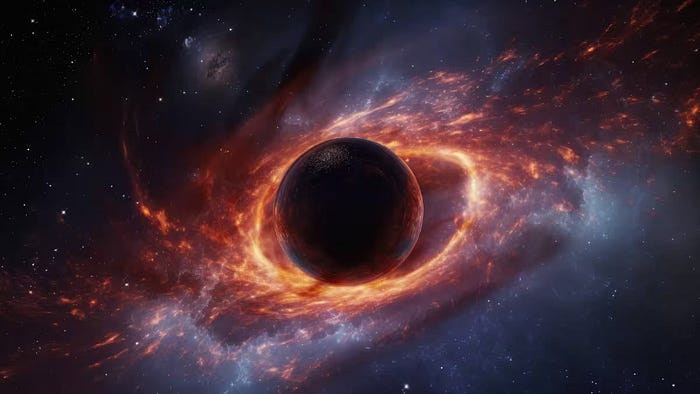5 Mind-Blowing Scientific Discoveries of 2024 That Will Leave You Speechless
In the ever-evolving landscape of scientific research and exploration, humanity’s brightest minds continue to push the boundaries at a rate faster than ever before. So far this year, unless you’re watching in the future, in which case, hello future you, has seen no exception. And while we’re only a few months into this year, there have already been several fascinating discoveries from a wide variety of fields. Today, we’re going to talk about five of them, so let’s dive in.
1. The Big Ring: Unveiling the Mystery of the Cosmos
Sifting through data from the Sloan Digital Sky Survey, PhD student Alexia Lopez made a discovery that rocked the world of astrophysics. 9.2 billion light-years away from us lies a massive circle of galactic clusters, aptly nicknamed the Big Ring. With a diameter of 1.3 billion light-years and a circumference of 4 billion light-years, it challenges all conventional cosmological principles. Its existence raises questions about the formation of cosmic structures and the very nature of our universe. As Lopez herself puts it, the Big Ring gives us a big cosmological mystery that demands answers.

Imagine a breathtaking image of the night sky, dotted with stars and galaxies. In the center of the frame, a colossal ring-like structure stretches across the cosmos, its vastness incomprehensible. Galactic clusters swirl within its circumference, forming a mesmerizing pattern against the backdrop of space. The Big Ring, as it’s affectionately called, defies logic and challenges our understanding of the universe.
2. Revolutionizing Battery Technology: Water and Calcium Batteries
Batteries are crucial to our modern society, but their production and disposal come with significant environmental costs. However, in 2024, two breakthroughs promise to change the game. In Australia, researchers have developed recyclable water batteries, using water-based electrolytes that can be easily replaced, prolonging the battery’s lifespan indefinitely. Meanwhile, scientists in China have created calcium-based batteries, offering a cheaper and more sustainable alternative to lithium-ion batteries. These innovations hold the key to a greener, more efficient energy future.

Visualize a scientist in a lab, holding up a transparent container filled with clear liquid. Inside, a small battery prototype sits, its components visible through the glass. The researcher’s face lights up with excitement as they explain the breakthrough technology behind recyclable water batteries. Nearby, another scientist works on a calcium-based battery, surrounded by charts and diagrams detailing its potential impact on energy storage.
3. The Oldest Black Hole: A Cosmic Enigma
The James Webb Space Telescope, launched to peer deeper into the cosmos, made a startling discovery in 2024. It revealed GNz11, home to the oldest black hole in the observable universe. What’s baffling is not just its age, but its immense size, suggesting a rapid growth rate that challenges our current understanding of black hole formation. This cosmic enigma forces us to reconsider our models of the early universe and raises profound questions about the nature of space and time.

In a digital rendering of deep space, a distant galaxy shimmers with light. Zooming in closer, we see a massive black hole at its center, surrounded by swirling clouds of gas and dust. Astronomers observe from a control room on Earth, their monitors displaying data streams and colorful visualizations of the cosmic phenomenon. The discovery of the oldest black hole sparks conversations among scientists worldwide, fueling speculation about the mysteries of the early universe.
4. Unlocking the Potential of Cloning: The First Rhesus Monkey Clone
Genetic engineering took a leap forward in 2024 with the successful cloning of the first rhesus monkey, named Retro. This achievement, while raising ethical concerns, offers promising possibilities for medical research. Genetically identical monkeys provide a valuable resource for studying diseases and developing treatments, potentially reducing the need for animal testing in the future. However, it also raises important ethical questions about the limits of scientific experimentation.

In a state-of-the-art laboratory, researchers peer into microscopes, carefully monitoring the development of cloned embryos. Petri dishes line the countertops, each containing a tiny cell cluster that holds the promise of genetic replication. A rhesus monkey named Retro plays in a nearby enclosure, unaware of the groundbreaking scientific achievement that bears his name. Ethical debates swirl around the cloning experiments, as scientists weigh the potential benefits against the ethical implications.
5. Miniature Robotics: Insect-Inspired Marvels
In the world of robotics, researchers at Washington State University unveiled two insect-like robots, the smallest of their kind in the world. These miniaturized marvels, inspired by nature, demonstrate incredible speed and agility, opening up possibilities for applications such as robot-assisted surgery and environmental monitoring. With advancements in miniature actuators and battery technology, the future of robotics looks brighter than ever before.

A close-up shot reveals the intricate details of insect-like robots, their metallic exoskeletons gleaming under the laboratory lights. One robot, resembling a tiny beetle, scuttles across a tabletop with surprising agility. Another, modeled after a water strider, delicately balances on the surface of a miniature pond. Researchers marvel at the ingenuity of their creations, inspired by nature’s design. Plans and blueprints cover the walls, outlining future iterations and potential applications for the miniature marvels.
In conclusion, the year 2024 has already proven to be a remarkable year for scientific discovery. From unraveling the mysteries of the cosmos to revolutionizing battery technology and pushing the boundaries of genetic engineering and robotics, humanity continues to push the limits of what is possible. As we journey further into the unknown, one thing is certain: the pursuit of knowledge will continue to inspire awe and wonder for generations to come.